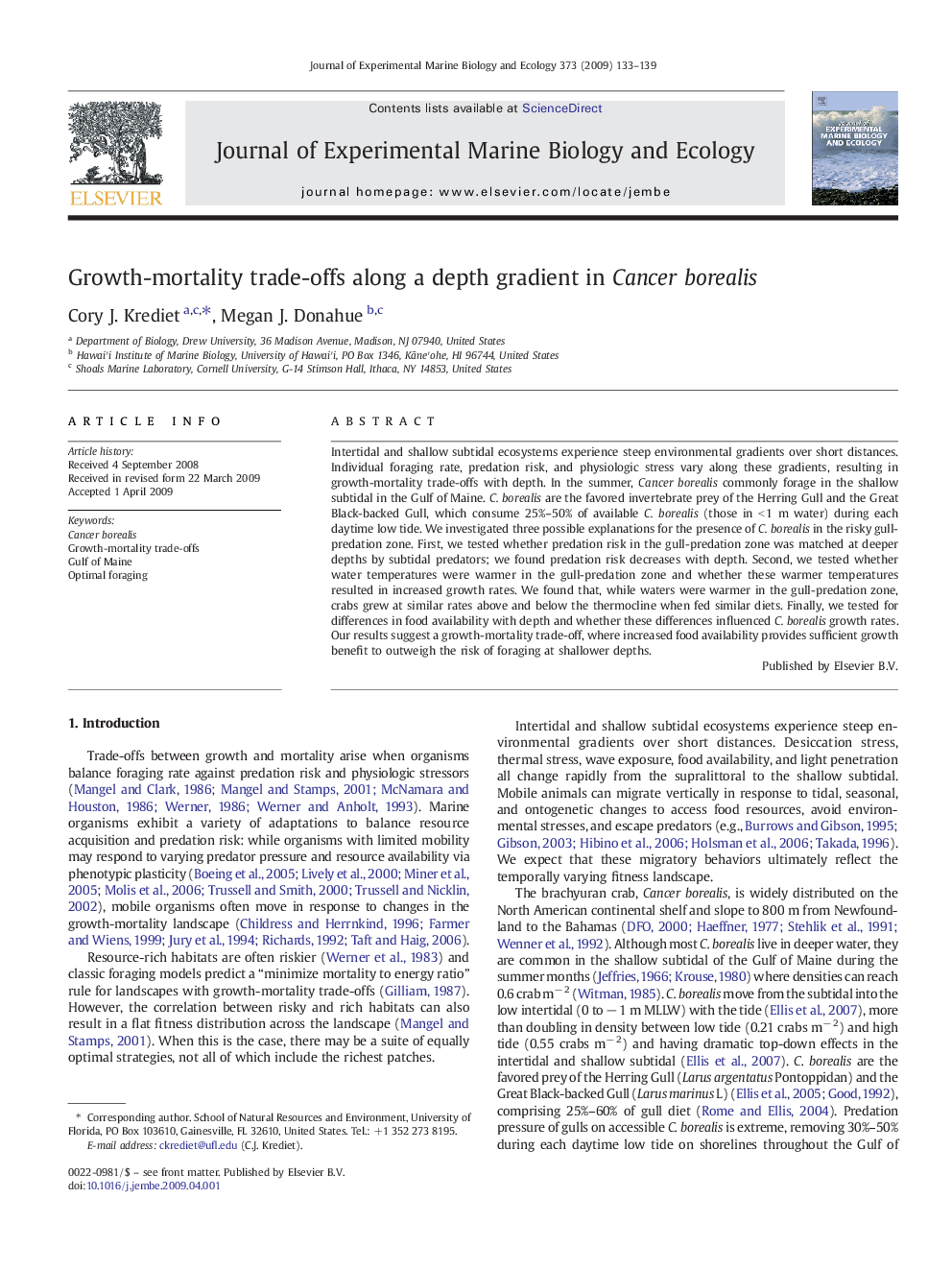| Article ID | Journal | Published Year | Pages | File Type |
|---|---|---|---|---|
| 4396881 | Journal of Experimental Marine Biology and Ecology | 2009 | 7 Pages |
Abstract
Intertidal and shallow subtidal ecosystems experience steep environmental gradients over short distances. Individual foraging rate, predation risk, and physiologic stress vary along these gradients, resulting in growth-mortality trade-offs with depth. In the summer, Cancer borealis commonly forage in the shallow subtidal in the Gulf of Maine. C. borealis are the favored invertebrate prey of the Herring Gull and the Great Black-backed Gull, which consume 25%-50% of available C. borealis (those in <Â 1Â m water) during each daytime low tide. We investigated three possible explanations for the presence of C. borealis in the risky gull-predation zone. First, we tested whether predation risk in the gull-predation zone was matched at deeper depths by subtidal predators; we found predation risk decreases with depth. Second, we tested whether water temperatures were warmer in the gull-predation zone and whether these warmer temperatures resulted in increased growth rates. We found that, while waters were warmer in the gull-predation zone, crabs grew at similar rates above and below the thermocline when fed similar diets. Finally, we tested for differences in food availability with depth and whether these differences influenced C. borealis growth rates. Our results suggest a growth-mortality trade-off, where increased food availability provides sufficient growth benefit to outweigh the risk of foraging at shallower depths.
Related Topics
Life Sciences
Agricultural and Biological Sciences
Aquatic Science
Authors
Cory J. Krediet, Megan J. Donahue,
